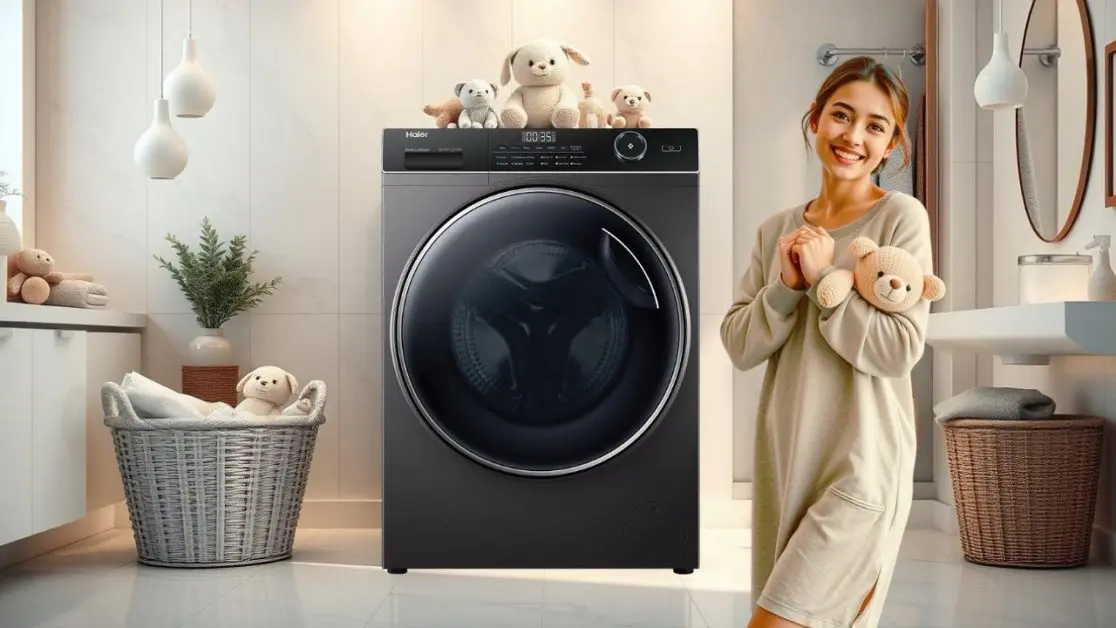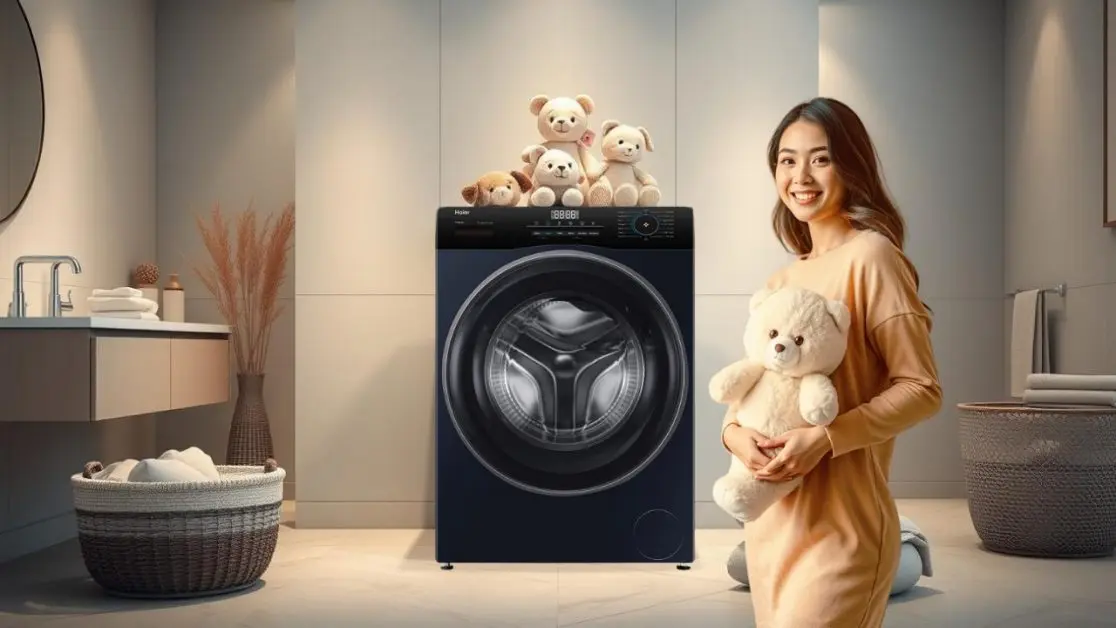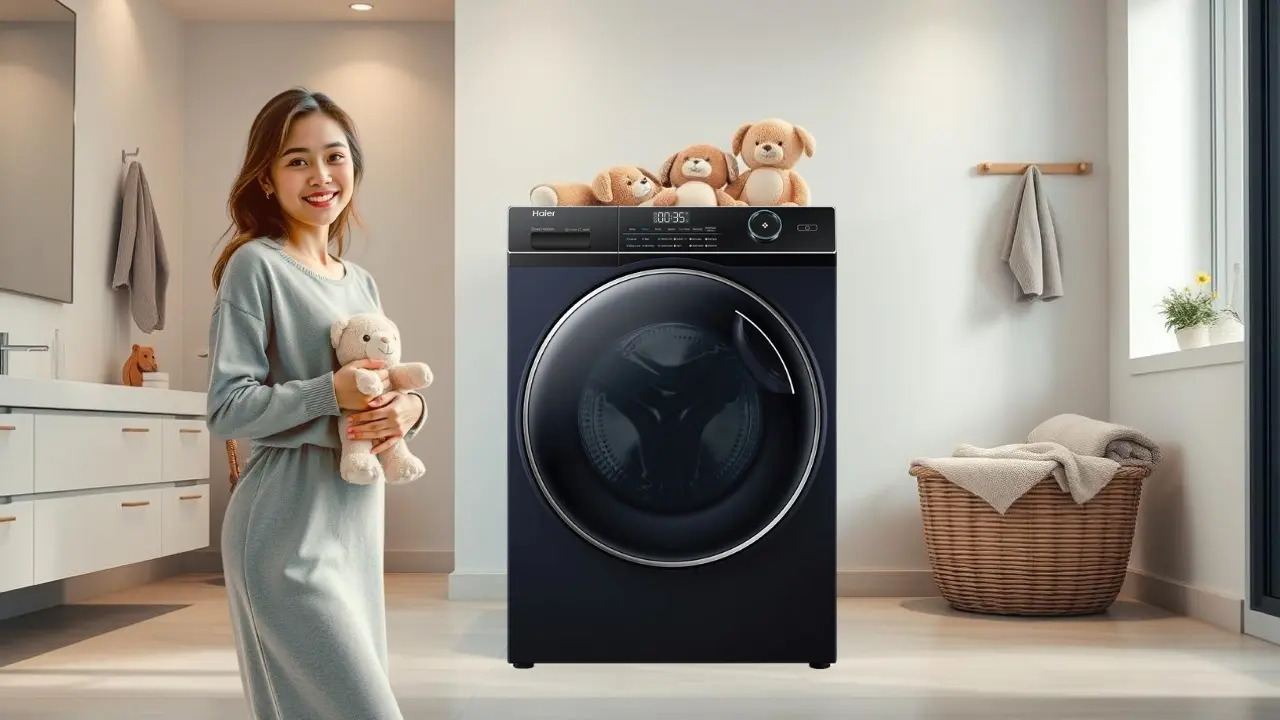Soft toys are more than just playthings, they’re cuddle companions, bedtime buddies, and a source of comfort for children and adults likewise. But over time, these plush pals can collect dust, allergens, and bacteria, making them less than ideal for snuggling.
If you’ve ever noticed your child’s favorite teddy looking a little dingy (or smelling funky!), it’s time for a good wash. The good news? You don’t need to scrub them by hand, your washing machine can do the hard work for you!
With the right steps, you can safely clean stuffed animals, plush toys, costumes, and even decorative wall hangings without damaging their softness.
But tossing them in the washer without precautions can lead to matted fur, misshapen stuffing, or even tears. That’s why it’s important to follow the proper washing and disinfecting techniques. In this article, let’s go over the best way to keep your child’s cherished toys fresh, fluffy, and germ-free!
Steps to Effectively Clean and Sanitize Stuffed Toys in a Washing Machine

Soft toys are an important part of children’s lives, but they are not immune to dirt, dust, and bacteria. Regular cleaning helps maintain their hygiene and longevity. Follow these simple instructions to wash and sanitize soft toys without causing damage.
1. Check the Care Label Instructions
Before tossing a soft toy into the washing machine, check the care label. Most care tags provide guidance on:
- Whether the toy can be machine-washed or requires handwashing.
- The recommended water temperature (cold or warm).
- Drying instructions (air-dry or tumble-dry).
- Any special care requirements or warnings.
If the care label is absent or unclear, take extra precautions. Avoid machine-washing stuffed animals with glued decorations, wires, or batteries. When in doubt, spot cleaning may be the safest option.
2. Pre-Treat Stains as Necessary
Before washing, treat heavily soiled areas or stains. Use a stain remover pen, gel, or spray and gently rub the cleaning agent onto the affected area. Allow it to sit for 10-15 minutes before washing.
For tough stains, create a paste using equal parts water and detergent or stain remover. Apply the paste to the stain and let it sit for 30 minutes before washing. Always perform a patch test to check for discoloration or fabric damage.
3. Place Soft Toys in a Mesh Bag
To protect soft toys during the wash, place them in a mesh laundry bag. This prevents damage and keeps small parts, such as buttons and ribbons, from getting lost.
Mesh laundry bags are available at most home goods stores. Choose a bag with a durable zipper and lightweight material. Do not overfill the bag; leave enough space for the detergent and water to circulate freely.
If you don’t have a mesh bag, a pillowcase can be used as an alternative. Place the toys inside, tie the pillowcase tightly, and then put it in the washer.
4. Select the Right Washing Cycle
When washing soft toys, choose a gentle or delicate cycle in your washing machine with cold to warm water, as indicated on the care label. Avoid high heat, as it may damage glued parts, tear fabric, or cause dye bleeding.
Use a mild, low-sudsing laundry detergent. Avoid bleach and fabric softener, as they can irritate the skin and weaken plush fabrics over time.
For heavily soiled toys, consider an extra rinse cycle. To further deodorize and sanitize, add half a cup of white vinegar to the rinse cycle.
5. Disinfect Soft Toys During Washing
To eliminate hidden bacteria and germs, add one capful of Pine-Sol Multi-Surface Cleaner or Dettol Disinfectant Liquid to the wash cycle. Both products are safe for colorfast fabrics and help remove odors while disinfecting the toys.
For a natural alternative, add a few drops of tea tree essential oil. Tea tree oil has antibacterial and antifungal properties, but it may stain some fabrics. Always conduct a patch test before using it.
6. Properly Dry Soft Toys
After washing, gently squeeze out excess water without twisting or wringing, as this may distort the toy’s shape. If the care label permits, place the toy in the dryer on a low tumble cycle for 10-15 minutes to restore fluffiness.
Sun-drying is a natural disinfectant. Lay the toys on a clean towel under direct sunlight, rotating them every few hours. If outdoor drying isn’t possible, use a fan or dehumidifier indoors. Ensure the toys dry completely within one to two days to prevent mold and mildew growth.
Avoid placing toys near heaters or radiators, as excessive heat can damage the fabric.
7. Fluff and Brush Soft Toys

Once the toys are fully dry, fluff and reshape them by redistributing the stuffing with your fingers. For plush toys with long fur, use a soft brush, a toothbrush, or a pet slicker brush to restore their original texture.
For tangled fur, use a fine-toothed comb to gently untangle the strands. Lightly misting the toy with fabric softener or diluted hair conditioner can make brushing easier.
8. Wash Soft Toys Regularly
To maintain hygiene, wash soft toys at least once a month or more frequently if used often. Between washes, wipe toys with a damp cloth and mild soap. Refresh cycles in your washing machines can also help keep them fresh.
Regular cleaning reduces dust buildup and minimizes children’s exposure to allergens.
Choosing the Right Washing Machine for Soft Toys
A high-quality washing machine makes cleaning toys easier and more effective. Haier offers a range of top-load and front-load fully automatic washing machines with features such as:
- Allergen and sanitation cycles that eliminate 99.9% of bacteria and allergens.
- Gentle baby wash cycles for delicate fabrics.
- Large-capacity tubs for bulky items like comforters and plush toys.
- Short wash cycles for lightly soiled items.
- Steam and antibacterial deep-cleaning options.
When choosing between a top-load and front-load washing machine, consider the following:
- Top-Load Washing Machines: These are convenient for loading and unloading soft toys without bending down. They use an agitator or impeller to clean effectively but may be rougher on delicate fabrics. They typically require more water and detergent.
- Front-Load Washing Machines: These are gentler on fabrics, making them ideal for delicate soft toys. They use less water and detergent while providing a thorough clean. They also tend to have better energy efficiency and advanced sanitization features.
With a Haier washing machine, you can keep soft toys and household fabrics clean, fresh, and free of germs. Explore the latest Haier washing machines that fit your budget and cleaning needs.
Use these tips to wash and disinfect soft toys, ensuring they remain soft, safe, and hygienic for your child.

